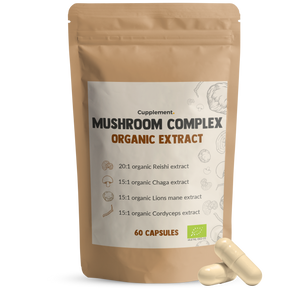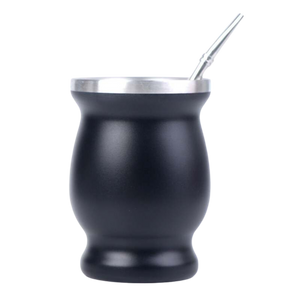
From berry to bean: the transformation of the coffee berry
In this blog we continue the journey of the coffee bean. We dive into the process from berry to bean: the transformation of the coffee berry! In our previous blog about the coffee bean we already gave away the process a little bit, but processing the coffee berry into a coffee bean is a true art. That is why we will dive deeper into processing the coffee berry in this article.
The importance of drying
The taste of coffee is determined by many factors. It may not surprise you that the processing of the coffee bean is one of them. Coffee beans that have just been picked have a moisture content of up to 60%! This large amount of moisture makes the coffee bean vulnerable to mold and increases the chance that the beans will rot. It is therefore very important that the beans are dried as quickly as possible. Over the years, various methods have been developed to dry the coffee beans. The natural drying process (how could it be otherwise) is the oldest of these.
Natural drying vs. Crops
With the natural drying process, the coffee cherries are spread over a large area after picking to dry in the sun. During this process, the berries must be turned regularly to prevent rot. However, it is difficult to guarantee the quality of the coffee beans with this process, which results in low-quality coffee beans. Other methods have therefore been developed to prevent rot. For example, by first removing the pulp from the coffee berry, leaving only the coffee bean itself. Most of the pulp is removed by passing the coffee cherries through a special de-pulping machine. The remaining pulp is soaked in water. Then the coffee beans themselves (which also contain a lot of moisture) are spread out on large areas to dry. Because the chance of rotting is much smaller with this process, this also produces higher quality coffee beans. On the other hand, this process is a lot more expensive.

After drying & Sort
After the coffee beans are dried, they are packed in large bags and stored for drying. This process can take up to 60 days. After these 60 days, an advanced sorting process follows in which the beans are sorted by size and assessed for quality. This is a particularly labour-intensive process in which coffee beans are often even sorted by hand. A large part of the final coffee quality is determined with this process and that is why this process also influences the price of coffee to a large extent.

In the end, the sorted coffee beans are packed per type in large bags and shipped all over the world. We could write a whole new article about this shipping of coffee, especially given the social impact of the coffee trade. Contemporary developments in fairchain coffee are increasingly becoming a standard for high quality coffee. To be continued. For now, at least you know how the picked coffee cherries are dried, sorted and packaged to eventually end up in your favorite coffee.
Resources/Literature
- https://en.wikipedia.org/wiki/Coffee
-
The world Atlas of
{
"@context": "http://schema.org",
"@type": "Article",
"articleBody": "In this blog we continue the journey of the coffee bean. We dive into the process from berry to bean: the transformation of the coffee berry! In our previous blog about the coffee bean we already gave away the process a little bit, but processing the coffee berry into a coffee bean is a true art. That is why we will dive deeper into processing the coffee berry in this article. \nThe importance of drying\nThe taste of coffee is determined by many factors. It may not surprise you that the processing of the coffee bean is one of them. Coffee beans that have just been picked have a moisture content of up to 60%! This large amount of moisture makes the coffee bean vulnerable to mold and increases the chance that the beans will rot. It is therefore very important that the beans are dried as quickly as possible. Over the years, various methods have been developed to dry the coffee beans. The natural drying process (how could it be otherwise) is the oldest of these.\nNatural drying vs. Crops\nWith the natural drying process, the coffee cherries are spread over a large area after picking to dry in the sun. During this process, the berries must be turned regularly to prevent rot. However, it is difficult to guarantee the quality of the coffee beans with this process, which results in low-quality coffee beans. Other methods have therefore been developed to prevent rot. For example, by first removing the pulp from the coffee berry, leaving only the coffee bean itself. Most of the pulp is removed by passing the coffee cherries through a special de-pulping machine. The remaining pulp is soaked in water. Then the coffee beans themselves (which also contain a lot of moisture) are spread out on large areas to dry. Because the chance of rotting is much smaller with this process, this also produces higher quality coffee beans. On the other hand, this process is a lot more expensive. \n\nThe washed coffee beans are spread over large areas to dry.\n\nAfter drying \u0026amp; Sort\nAfter the coffee beans are dried, they are packed in large bags and stored for drying. This process can take up to 60 days. After these 60 days, an advanced sorting process follows in which the beans are sorted by size and assessed for quality. This is a particularly labour-intensive process in which coffee beans are often even sorted by hand. A large part of the final coffee quality is determined with this process and that is why this process also influences the price of coffee to a large extent. \n\nCoffee beans in burlap bags can be stored for up to 60 days to dry properly.\n\nIn the end, the sorted coffee beans are packed per type in large bags and shipped all over the world. We could write a whole new article about this shipping of coffee, especially given the social impact of the coffee trade. Contemporary developments in fairchain coffee are increasingly becoming a standard for high quality coffee. To be continued. For now, at least you know how the picked coffee cherries are dried, sorted and packaged to eventually end up in your favorite coffee. \nResources\/Literature\n\nhttps:\/\/en.wikipedia.org\/wiki\/Coffee\n\nThe world Atlas of \u003ca rel=\"noopener noreferre",
"mainEntityOfPage": {
"@type": "WebPage",
"@id": "https:\/\/drinkcupplement.com"
},
"headline": "From berry to bean: the transformation of the coffee berry",
"description": "In this blog, we tell you all about the transformation of the coffee berry. Learn all about roasting, picking, growing, drying and packaging the coffee bean.",
"image": [
"https:\/\/drinkcupplement.com\/cdn\/shop\/articles\/battlecreek-coffee-roasters-mY4hAwxNA_0-unsplash_2400x.jpg?v=1660656543"
],
"datePublished": "2022-07-26T13:24:49Z",
"dateCreated": "2022-07-26T13:24:45Z",
"author": {
"@type": "Person",
"name": "Florian Fermin"
},
"publisher": {
"@type": "Organization",
"name": "Cupplement"
}
}
Popular products
-
Cupplement Frother

Handy frother for mixing additives to your coffee.
Order now -
Lions Mane

Lions Mane is known to help improve your concentration.*
Order now -
Matcha

Energy
Immunity
Matcha is een fijngemalen groene thee poeder dat traditioneel wordt gebruikt in de Japanse theeceremonie.
Order now -
Pill box

Introducing our sleek and convenient Pill Organizer – the perfect solution to streamline your supplement routine!
Order now -
Mushroom complex capsules

Discover the ultimate support for your overall well-being with our Organic Mushroom Complex in convenient capsules! Now with more active ingredients.
Order now -
Gourd set with bombilla

Handy frother for mixing additives into your coffee.
Order now
- Choosing a selection results in a full page refresh.
-



















